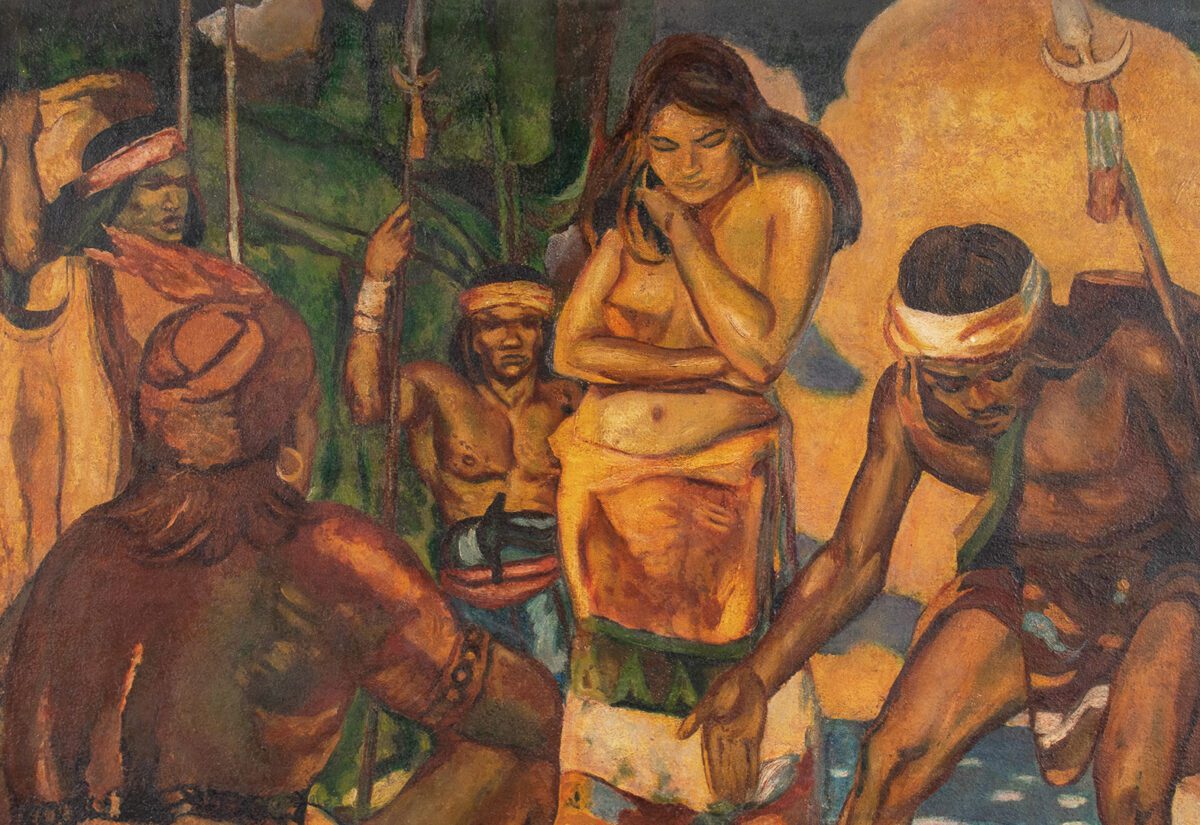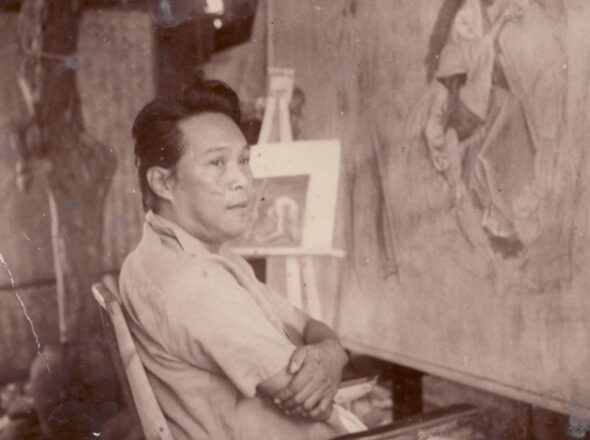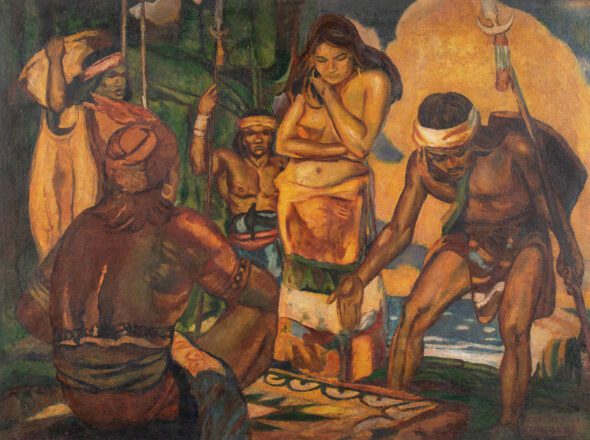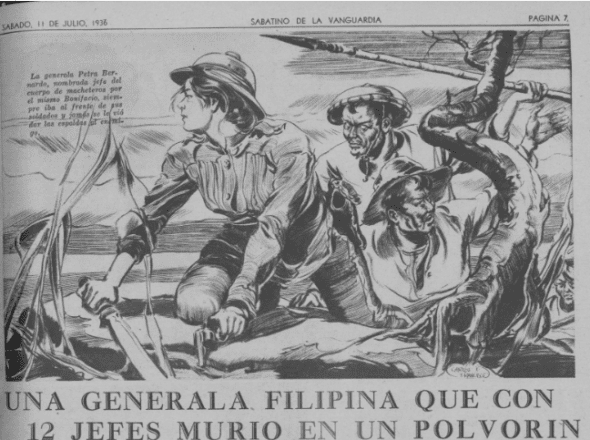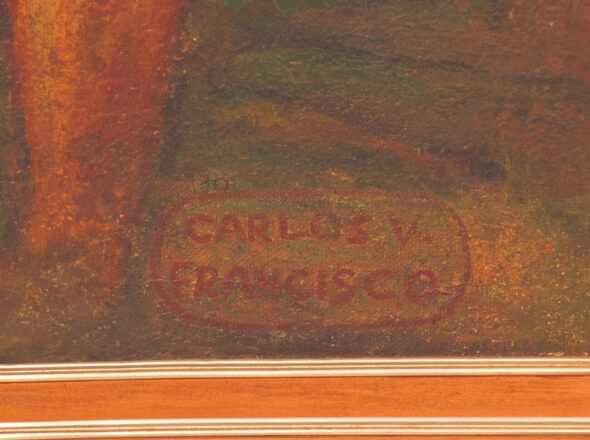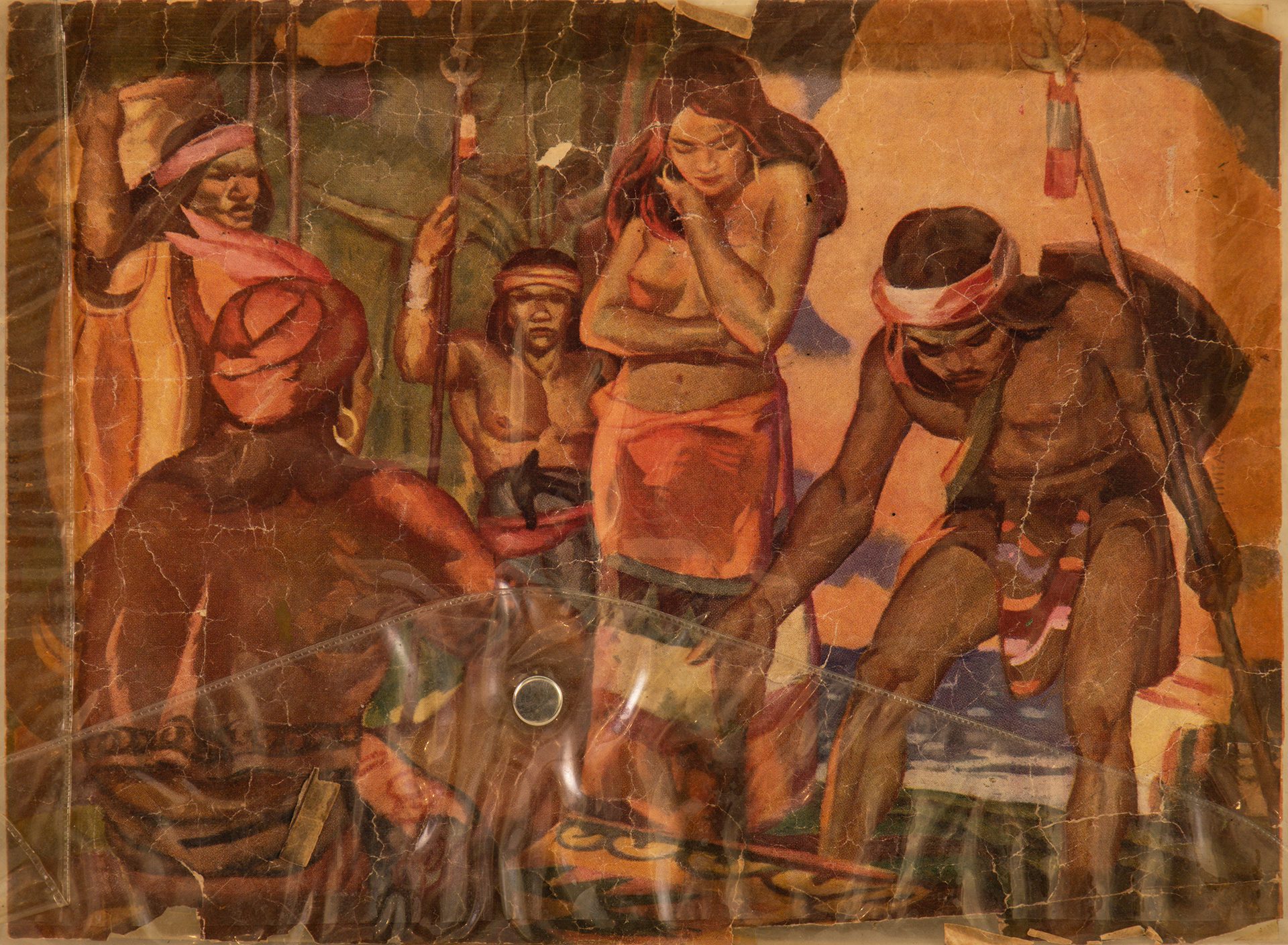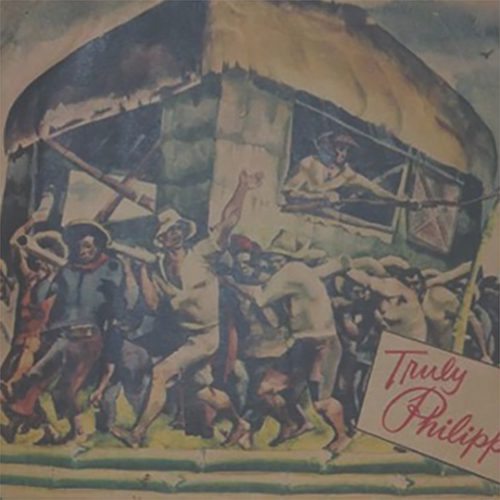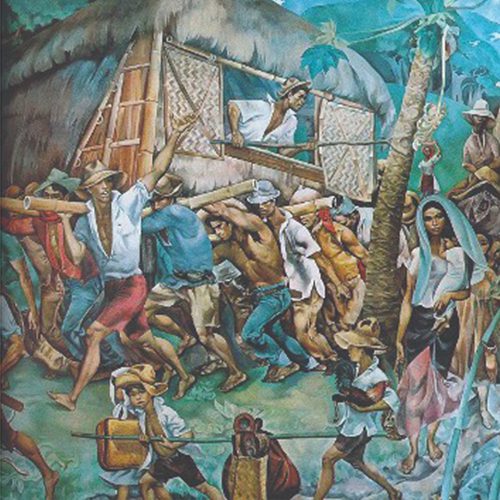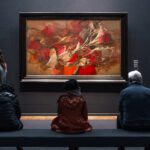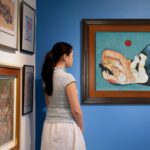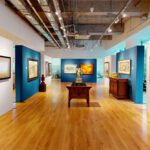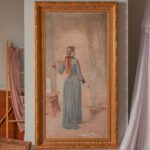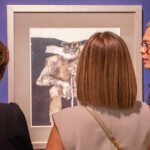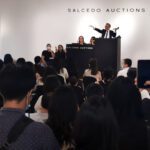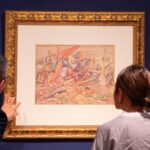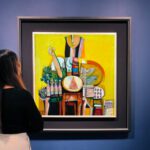During his lifetime, National Artist Carlos ‘Botong’ Francisco played a pivotal role in revolutionizing the fine arts landscape of the Philippines by creating some of the country’s most impactful large-scale mural paintings that evoked Philippine nationalism. He launched the initial wave of Philippine modernism, along with National Artist Victorio Edades and Galo Ocampo. Together, they spearheaded the transformative shift in Philippine artistic expression, moving away from the traditional romanticized Amorsolo school towards the emerging modern art movement.
The Present
Ang Aguinaldo captures a scene in pre-colonial Philippines in broad strokes and rich tropical colors. The focal point is a woman–her arms encircling her form in a seemingly bashful demeanor. A closer look reveals that she is with child. Next to her, a warrior bows before their seated leader, whose back is turned to the viewer. Considering the work’s title, it plausibly portrays a moment of revealing the woman’s motherhood. In a skillful juxtaposition, Botong contrasts this pre-colonial vignette with a title derived from the Spanish language. “Aguinaldo” translates to “gift,” and in the context of the Christmas season, a “present.”
Ang Aguinaldo is a rare early Botong, created before the war and predating his iconic murals. Botong produced fewer than 50 relatively small oil paintings, as most of his creative output is in the form of expansive murals. This piece distinctly reflects his style from that era, showing the strong and bold treatment that would continue to evolve in his oeuvre. Even his block-style signature represents one of several variations he employed in his early works. While his dramatic and flowing gestures, along with his idealized heroic proportions, had not fully matured, the painting offers a glimpse into the artistic elements that would ultimately define Botong’s subsequent grand-scale canvases and murals.
Botong’s signature varied during the early periods in his artistry. This painting is signed in block style and enclosed in a circle. This signature can also be seen in an editorial he drew for ‘Sabatino de la Vanguardia’ in 1936.
Unmistakably Botong
Ang Aguinaldo has a sterling provenance, underscored by meticulously kept documentation tracing the history of its ownership. In 1938, Botong sold this artwork to Gene Cabrera, a prominent cartoonist and illustrator renowned for his haunting oil on canvas creation titled A Tragic Lesson (1957), which is prominently showcased at the National Museum of the Philippines. Both individuals shared a common background as illustrators for the Graphic Magazine (now known as Philippines Graphic), a weekly publication that celebrated Tagalog literature and actively supported Filipino artists. Several years following Botong’s demise in 1969, Cabrera extended an offer to sell the painting to Jaime Ledesma of Ledesma Overseas Shipping, who is a respected collector of art. At the time of the offer, the painting adorned Cabrera’s residence.
In 1975, Ledesma procured and took ownership of the artwork, and he obtained a Certificate of Authenticity from Demetrio Diego, a distinguished artist who excelled as an illustrator, cartoonist, and painter during his time. Diego’s professional journey encompassed serving as an illustrator for Tribune and Taliba newspapers during the 1920s, assuming the role of chief artist for the Sunday Times Magazine from the 1950s to the 1970s, and functioning as an Art Director for The Manila Times.
Diego and Botong collaborated closely starting from the 1930s, functioning as illustrators for publications such as Sunday Tribune, La Vanguardia, and Taliba Magazines. National Artist BenCab once shared that he was often sent by Diego to Angono, Rizal to persuade Botong to contribute an illustration for the cover of the next Sunday Times Magazine. Possessing this profound understanding of Botong’s artistic approach, Diego attested that Ang Aguinaldo is “a “genuine” Botong oil painting. Unmistakenably [sic] and a real Botong.”
Suzano “Jun” Gonzales, the late art conservator and restorer, was entrusted with bringing back the piece to its former glory. Gonzales gave the piece minimal conservation – just repainting small cracks and missing paints– guided by the principle of keeping the integrity of the original painting intact. In his conservation report, he stated that nothing new in terms of additional design and color scheme, and painting was introduced to the work. Gonzales was also known for cleaning Juan Luna’s Spoliarium in 1982 before it was moved to the National Museum of the Philippines.
Ang Aguinaldo was acquired from Jaime Ledesma by Multinational Investment Bancorporation through its art dealership and brokerage affiliate East Asia Corporation for Arts & Antiquities led by its managing director Amado Lacuesta in 1979. Within the same year, they also added more Botong works to their collection, such as his c. 1950s Fluvial Parade and 18 watercolor paintings of costume designs for his work in the film industry. This series of acquisitions swiftly cemented the institution’s reputation as a serious collector of Botong’s artworks within the local artistic community.
Another version of Ang Aguinaldo in Graphic Magazine (1938)?
An artwork very similar to Ang Aguinaldo graced the back cover of the December 1938 Christmas edition of Graphic Magazine. While the two works are similar at first glance, it is clear that the oil on canvas painting on offer and the work that appears in the magazine are different, notably the faces and details of the woman’s body.
This leads to the inevitable question of whether or not the image in the magazine is supposed to be a photographic and faithful reproduction of the painting; and consequently, whether or not the oil on canvas in the bank’s collection is authentic based on the Graphic Magazine image.
It is the opinion of Salcedo Auctions that the artwork that appeared in the magazine and the oil on canvas painting acquired by the institution are two separate and different works by Botong – variations on the same subject matter. This theory is based on the fact that it was not uncommon for Botong to create similar works in different mediums and dimensions. There is evidence of this having been done, as seen in Botong’s famous Bayanihan mural of 1962, which appears to have an earlier iteration in an undated magazine editorial that interestingly shows the same heavy set lines and forms as the Ang Aguinaldo version that appears in Graphic Magazine.
Botong produced another version of his ‘Bayanihan’ (right) commissioned by UNILAB Philippines in 1962: the undated editorial image that appears in an unidentified magazine (left) appears be an earlier concept study of this work
The Well-Appointed Life live and online auction takes place on 16 September 2023 at 2 PM. Preview runs from Thursday, September 8 to Friday, September 15 at the Salcedo Auctions, NEX Tower 6786 Ayala Avenue, Makati City. The gallery is open on Tuesdays to Fridays, 9AM-6PM and Saturdays, 9AM-4PM.
Register to bid for the upcoming The Well-Appointed Life September edition. View the eCatalogue via this link.
References:
Arts Antiques & Designer’s Goods. “Demetrio Diego.” Facebook. 23 February 2017. Retrieved from bit.ly/3P31UQ4
“Capas.” CCP Encyclopedia of Philippine Art Digital Edition. 2020. Retrieved from epa.culturalcenter.gov.ph/3/82/2159
“Carlos “Botong” Francisco (1914-1969).” Philippine Art Gallery. Retrieved from bit.ly/47GflwQ
Dalisay, J. “Restoring the Spoliarium.” PENMAN. PhilStar Global. 17 July 2006. bit.ly/3sqNikA
“Philippines Graphics: 91 years of literature and the news.” Philippines Graphic. 29 June 2018. bit.ly/47BHJjA
